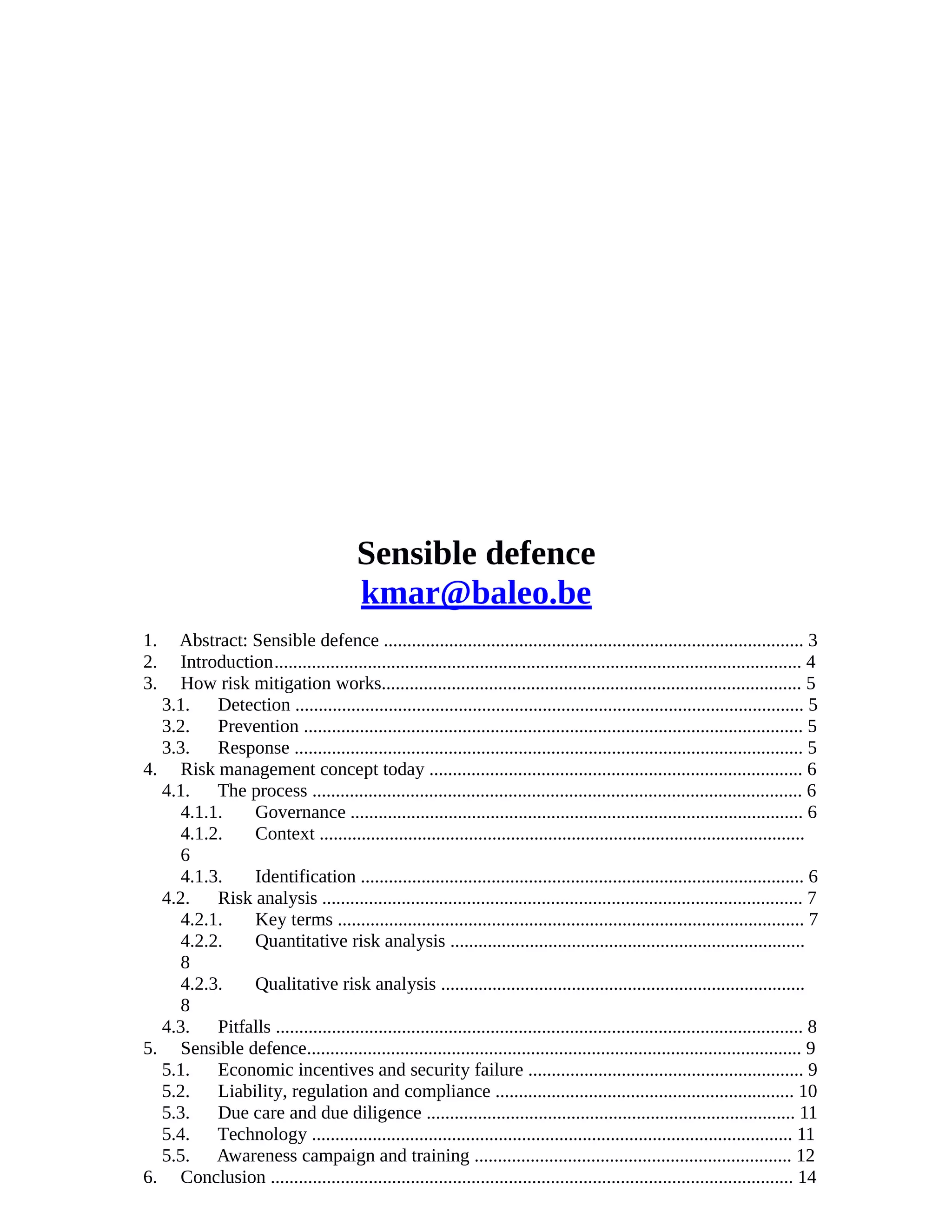The document discusses the importance of effective risk management in enhancing security, emphasizing that security is centered around understanding and managing risks rather than solely relying on technology. It outlines the current concepts and processes of risk management, including detection, prevention, and response strategies, while highlighting the pitfalls and the necessity for integrating security considerations early in project development. Additionally, it addresses the economic and regulatory influences that affect security decisions and the importance of balancing security with costs and other business priorities.













